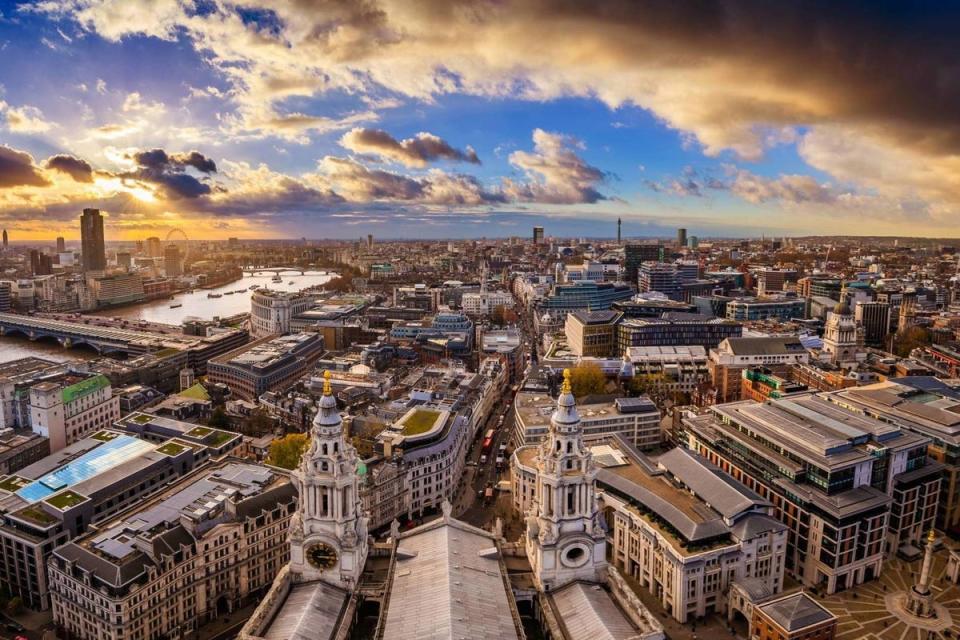London house prices climb despite interest rate hikes and cost-of-living crisis

London house prices have risen 2.1 per cent in the last month, the biggest monthly increase of any UK region, according to new Rightmove research based on asking prices.
Annually, this means that the capital has seen a 6.9 per cent rise in the value of its homes to an average of £682,499.
This is despite the dual economic pressures of higher interest rates making mortgage borrowing more expensive and the cost-of-living crisis impacting household bills.
This unexpected increase is being fuelled by the middle and high-end market sectors, who are more insulated than first-time buyers from the financial fallout.
The average monthly mortgage payment for new first-time buyers putting down a 10 per cent deposit has reached £1,057, which is 40 per cent of an average gross salary for the first time since November 2012, and this could jump to £1,114 per month if lenders pass on the Bank of England’s latest 0.5 per cent interest rate increase.
“The housing market continues to be extremely resilient even in the face of the economic headwinds that are stretching household finances. The rising cost of living is increasingly playing a role in some buyers’ considerations, as they look at their budgets and what they can afford,” says Tim Bannister Rightmove’s Director of Property Science.
“First-time buyers still face the challenges of rising interest rates, saving for an increasingly large deposit, and increasing rents. Industry data shows more people are rushing to fix their mortgage rates, and following another rate rise this is likely to increase further.”
London’s top and bottom boroughs
Outer London is still seeing the highest annual growth with the borough of Havering top, boasting an average house price of £483,814, a 10.4 per cent increase compared to last year. Second was Merton which rose 10.4 per cent to £739,582 and third was Barking and Dagenham, rising 8.7 per cent to £376,815.
On the flip side, Richmond upon Thames saw the lowest annual growth in London, at just 2.7 per cent, and had the biggest recent fall in prices, dropping 2.8 per cent in the last month. This took its average house price to £909,579. Southwark and Tower Hamlets were also at the bottom end of the table, rising just 3.3 per cent and 3.4 per cent to £652,256 and £594,076 respectively in the last 12 months.
Buyer demand up 20 per cent
While the trend for a resilient housing market is more marked in London, it’s something that is also being seen nationally.
When compared to the pre-pandemic five-year average, buyer demand is up 20 per cent across the country and properties in London are taking an average of just 50 days to sell. Despite supply still being an issue, Rightmove says the number of homes coming to market has risen back to 2019 levels, giving buyers more to choose from.
“Prices are likely to remain strong while demand continues to outweigh supply. However, it is as important as ever to price competitively, especially in the sectors where there is now more choice, as there is a fine line between a realistically priced home and a home that feels overpriced when many buyers are making every pound count.”
Stamp duty changes a boost for London’s first-time buyers
Friday’s reduction in stamp duty is also set to bolster demand and Rightmove recorded a 10 per cent increase in traffic to its site within an hour of the chancellor’s announcement. Raising the threshold to £250,000 means that a third of all UK homes currently for sale are now exempt from stamp duty in England, up from seven per cent when the threshold was £125,000.
While they might be feeling financial pressures elsewhere, the latest announcement offers some solace for London’s first-time buyers. They will not pay stamp duty on the first £425,000, up from £300,000, and they can claim this on properties up to £625,000 rather than the previous £500,000. This works out at a potential £11,250 in relief.
“The first-time buyer threshold change means we could see more first-time buyers who can afford it making a jump to a bigger home as their first move. With more buyer demand we would also expect that the current trend of more properties coming to market will continue, offering more choice for buyers,” adds Bannister.

 Yahoo Movies
Yahoo Movies 